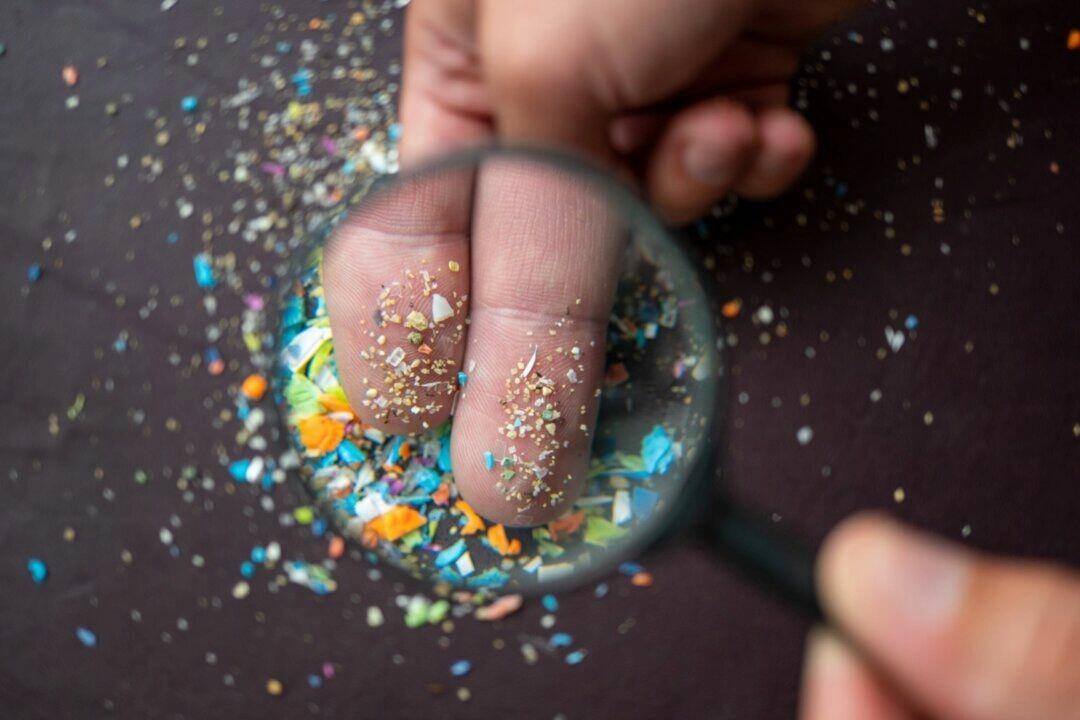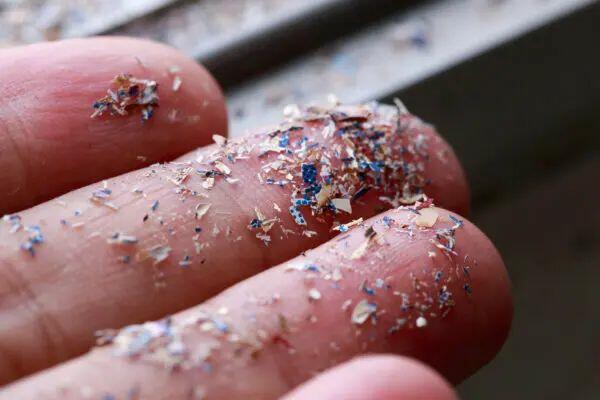Microplastics In Bloodstream Increase Stroke Risk 4.5-Fold: Study
The issue of microplastic pollution in the environment is gaining increasing societal attention. Research indicates that once microplastics enter the human body, they can increase the risk of heart attacks, strokes, or even death. What kind of everyday behaviors raise the risk of ingesting microplastics?

Lin Xiaoxu, a U.S. virology expert with a doctorate in microbiology, explained what microplastics and nanoplastics are and how to reduce exposure to them.
Plastic is a crucial product in industrial production and is deeply intertwined with daily life. When plastic products break down, they become microplastics or even smaller nanoplastics. Microplastics are plastic pieces smaller than 5 millimeters, while nanoplastics measure below 1 micron (1,000 nanometers).
Sources of Microplastics
Mr. Lin explained that everyday plastic products release microplastics. Synthetic textiles shed fiber fragments, and worn-out tires produce plastic-containing dust. Even seemingly smooth plastic water bottles can shed microplastics during washing.
In nature, sunlight and ultraviolet radiation continuously degrade plastics into smaller particles. Textiles, hygiene products, bottles, bags, particles emitted from factories, tire dust, fishing nets, and more all contribute to microplastic pollution. Humans and other animals ingest some of these particles, while others accumulate and break down in oceans and soils. Marine organisms like shellfish, small fish, and shrimp, especially those near coastlines, are particularly prone to ingesting microplastics.
Mr. Lin emphasized that the main sources of microplastics are industrial waste and wastewater discharge, which can cause significant environmental damage if not adequately treated.
Therefore, before wastewater is released from factories, it should undergo processes like screening, sand removal, sedimentation, biological reactions, chlorination, ultraviolet treatment, membrane technology, etc., to remove over 90 percent of microplastics. However, complete elimination is not achievable. Natural environments may take thousands to tens of thousands of years to fully degrade microplastics.
Health Hazards of Microplastics
Microplastics typically enter the body through food and drink ingestion, while nanoplastics can be inhaled. Apart from directly irritating mucous membranes, microplastics can carry environmental microbes like bacteria and viruses into the body.
“If you ingest something toxic, people usually say to wash it out quickly, but microplastics are very tiny particles that adhere to the surface of the stomach. It’s not guaranteed that washing out will remove them; the body needs to slowly eliminate them, increasing the burden on the body,” Mr. Lin noted.
Studies have found that after exposure to ultraviolet light and microbial degradation in the natural environment, microplastics become more adsorbent, forming complexes with various environmental pollutants on their surfaces, making them more toxic to organisms.
Microplastics, which serve as carriers for heavy metals and pathogens, exhibit various toxicities upon entering the body. Most microplastics ingested through food are excreted, but a small portion can remain in the intestines for days, causing intestinal damage, inflammation, and disruption of gut microbiota. Over time, microplastics can be absorbed into intestinal cells and enter the bloodstream, damaging organs and systems throughout the body. Organs like the liver and kidneys and bodily systems such as the immune, reproductive, and nervous systems are particularly affected. Additionally, excessive inhalation of microplastics can cause respiratory tissue damage and disease.
In March, a study published in the New England Journal of Medicine found that most carotid artery plaques contained microplastics. The study included 257 patients aged 18 to 75 with asymptomatic carotid stenosis. Following plaque removal from the arteries, researchers detected polyethylene in 150 patients (58.4 percent) and polyvinyl chloride in 31 patients (12.1 percent) of removed carotid artery plaques.
Macrophages within the plaques contained visible foreign particles, some with jagged edges and chlorine content. The study suggested that patients with detected microplastics had over 4.5 times higher risk of heart attacks, strokes, or death compared to those without microplastics.

US Congress Concerns Over Microplastics
On Feb. 27, the U.S. Senate Committee on Environment and Public Works held a hearing on microplastics in water.
Susanne Brander, an associate professor at Oregon State University’s College of Agricultural Sciences who has been researching microplastics and plastic pollution for nearly a decade, pointed out at the hearing that microplastic particles exist in the human heart, placenta, and lung tissues and circulate in blood. Microplastics harm marine and terrestrial organisms, slowing growth, altering behavior patterns, and causing reproductive disorders, particularly adversely affecting mammals.
She described plastic pollution as one of humanity’s most significant environmental challenges and one of the world’s “most expensive” problems. It causes annual economic losses of $13 billion to fisheries, tourism, and shipping industries. In 2018, health care costs related to plastic-associated chemicals in the United States were estimated at up to $249 billion.
How to Avoid Ingesting Microplastics
How can we reduce the intake of microplastics in everyday life? Mr. Lin suggested the following preventive measures:
Filter water: Invest in a high-quality water filter capable of removing microplastics. Look for filters with a fine pore size or those specifically designed to filter out microplastics.
Avoid plastic containers: Opt for glass or stainless steel water bottles instead of plastic ones. Plastic bottles can shed microplastics, especially when exposed to heat or sunlight. Switch from plastic to glass containers for storing food. Glass does not degrade into microplastics and is safer for food storage.
Be cautious with food packaging: Choose fresh, unwrapped produce over prepackaged items. When buying packaged goods, select those in glass or cardboard rather than plastic.
Minimize processed food consumption: Processed foods often come in plastic packaging and can contain higher levels of microplastics. Cooking at home using fresh ingredients reduces exposure.
Avoid single-use plastics: Reduce the use of single-use plastics such as plastic cutlery, straws, and bags. These items contribute to pollution and degrade into microplastics over time.
Use natural fabrics: Synthetic fibers from clothing can shed microplastics during washing. Choose natural fabrics like cotton, wool, and silk, and use a laundry bag designed to capture microfibers.
Wash hands frequently: Wash hands often, especially after using gloves, as plastic residues inside gloves can transfer to hands.
Scrutinize cosmetics: Avoid cosmetics containing microplastics, such as microbeads in scrub creams and glitter in makeup products. Look for natural alternatives instead.
yogaesoteric
July 16, 2024
